
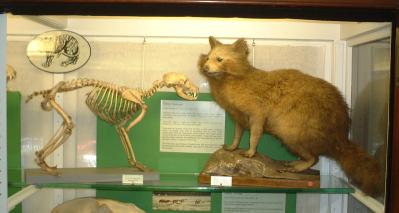
ORDER CARNIVORA
FAMILY PROCYONIDAE
RACCOON FAMILY
General features and members of the family
Three subfamilies of mammals (19 species in 7 genera), diverse in form and ecology, are currently placed within this family which is one of five families of dog-like mammals descended from the wolf-like Vulperines:
- Subfamily Procyoninae: the raccoons and coatis.
- Subfamily Potosinae: the kinkajous and olingos.
- Subfamily Ailurinae: the red panda.
Procyonids are mid-sized, long-bodied mammals with long tails. They mostly inhabit forests of the New World. All are good climbers using their firm plantigrade feet and long tails to help them balance as they climb. In appearance, they have fox-like faces and a variety of distinctive markings on their faces, coats and tails.
Procyonids are typically omnivorous but have a wide variety of feeding habits. Fruit is a staple for most species but most supplement their diet with insects and small animals. Their teeth are generalised and show varied modifications from the characteristic dental formula of I3/3, C1/1, PM4/4, M2/2 = 40.
Subfamily Procyoninae: the raccoons and coatis.
 | 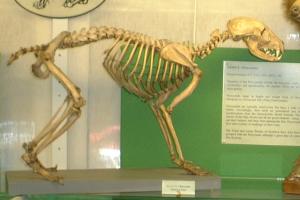 |
| Raccoon | Skeleton of Raccoon |
Raccoons are found throughout North, South and Central America. They are very adaptable and thrive in human environments, marauding crops and scavenging for food in garbage. They are opportunistic omnivores living on whatever food is available. They mostly forage at night near bodies of water, for worms, snails, fish, crayfish and clams but may also travel to other areas to exploit fruit, berries and nuts. Their carnassials are unspecialised and their molars have flat crowns.
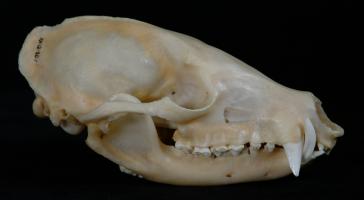 | 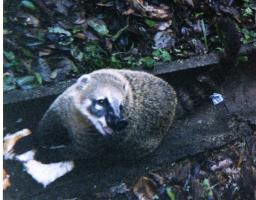 | 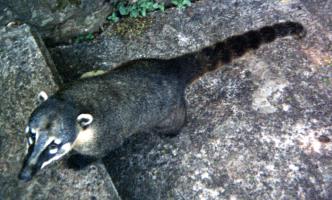 |
| Ring-tailed coati (Dental formula: I3/3, I 1/1, PM4/4, M2/3 = 42). The ring-tailed coati (Nasua nasua) occurs in southern North America, Central and South America. It has a varied diet of insects and small invertebrates (beetles, grubs, ants, termites, spiders, scorpions, centipedes, land crabs) frogs, lizards and their eggs, mice, turtles and fruit. The molars and premolars are high-cusped as adaptations to an insectivorous diet; the canines are long and blade-like and may be used to cut roots while digging. Coatis are the most carnivorous of the procyonids and their doglike dentition enables them to catch and eat prey up to the size of rabbits. Their long flexible snout enables them to probe crevices for insects. | ||
Subfamily Potosinae: the kinkajous and olingos.
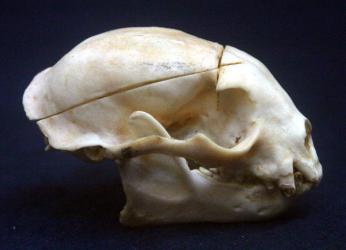 |
| Kinkajou skull (Dental formula: I3/3, I 1/1, PM3/3, M 2/2 = 36). The kinkajou (Potos flavus) which lives in the forest of Central and South America is herbivorous, feeding on fruit and nectar. It has a shorter than average muzzle and a very long thin tongue for obtaining nectar from flowers. |
Subfamily Ailurinae: the red panda.
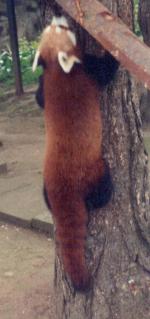 | 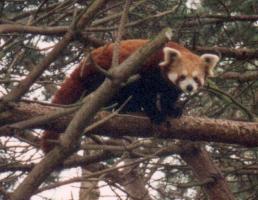 |
The red panda (Ailurus fulgens) favours remote bamboo forests of the Himalayas and South China. It is herbivorous and adapted to an arboreal way of life. Its primary diet is leaves and shoots of bamboos. We do not have any specimens but our pictures of the red panda that lives in Edinburgh Zoological Gardens show its characteristic appearance and how it climbs.
| Dog-like carnivorans | Aquatic carnivorans | Cat-like carnivorans |
|---|---|---|
|
|
|






